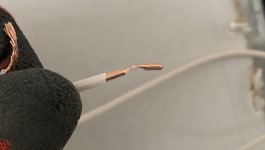I've been an electrician 54 years. I tighten receptacle & switch screws by hand & never had a loose connection, though in youth I sometimes stripped one. In Code update schools taught by the inspector he has stressed the recent requirement to use a torque screwdriver. It seems cumbersome, I don't always do it. Yesterday, I was checking myself & I recalled a specification of 35 inch pounds on a #8 wire binding screw on a receptacle. That seems too much, I feel I'll strip at that much.
Where in Code is this found?
Annex I doesn't seem to address these with any clarity.
Where in Code is this found?
Annex I doesn't seem to address these with any clarity.


